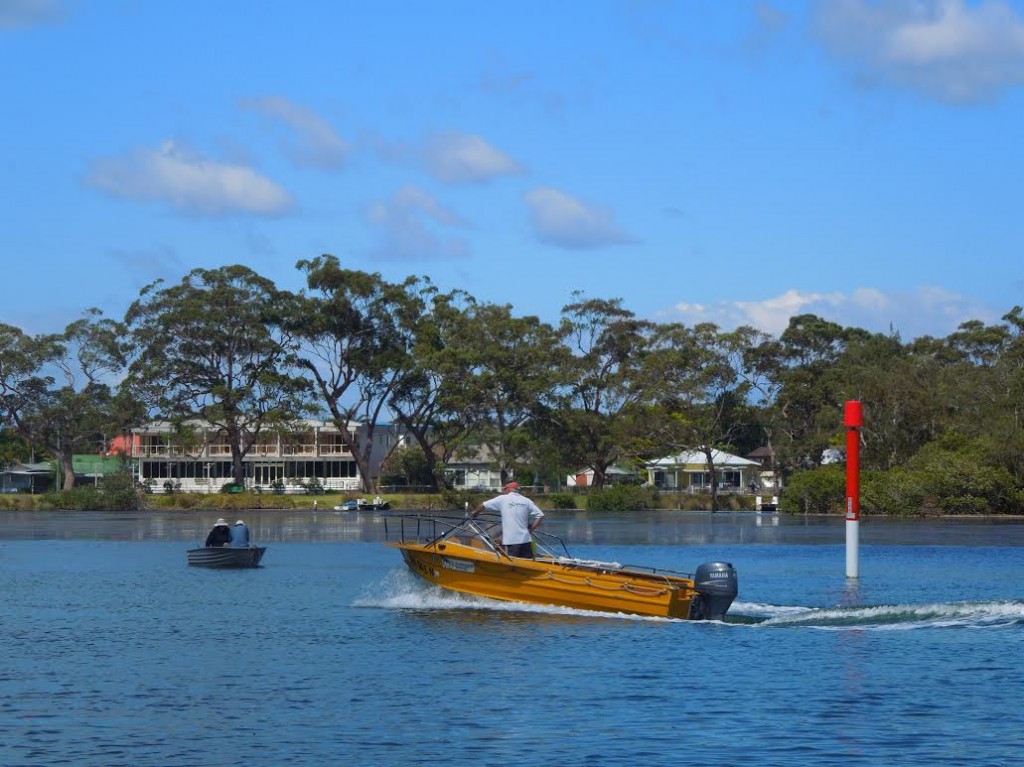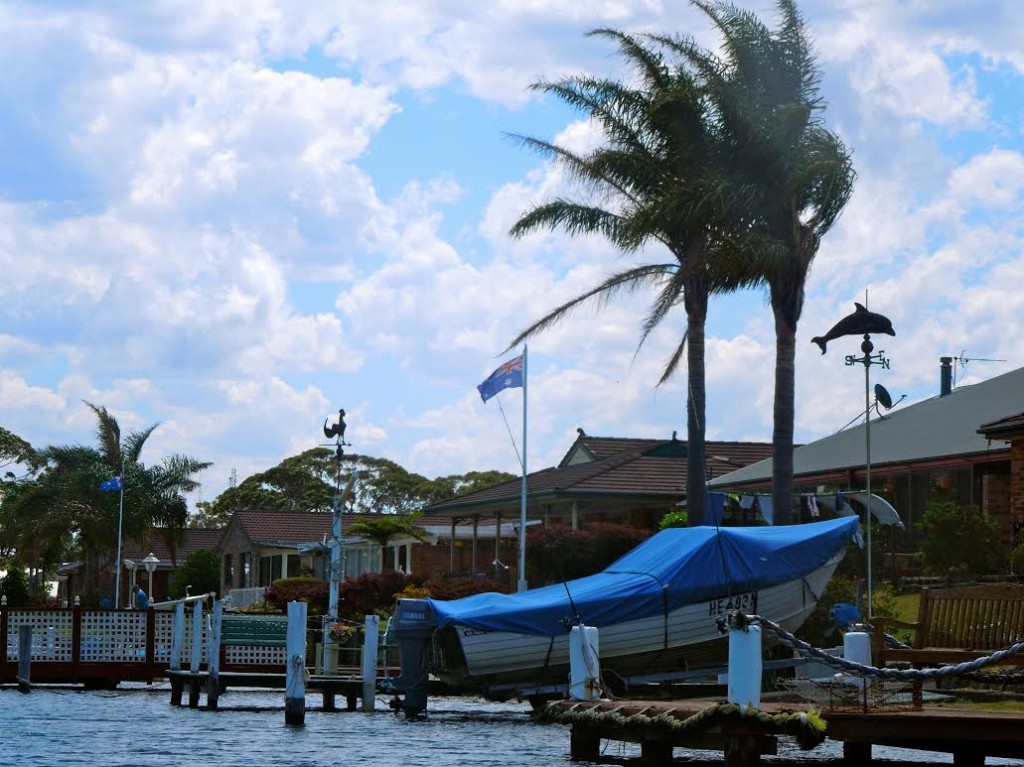The residents of Sussex Inlet had a win recently. After more than 25 years of siltation and collapsing walls Shoalhaven Council have agreed to dredge the water channels, dug nearly 40 years ago, that provide boat access to the sea from the bottom of the suburban gardens of this canal estate.
The estate gets its name from the estuary which fills its canals. There are two sides to this natural Sussex Inlet – literally. Along its northern shoreline is a mix of mangrove, casuarina and sclerophyll forest dotted with the occasional habitation, including one of the earliest holiday retreats on the south coast.

The heritage-listed Christians Minde was established as a guest house in 1896 but the name refers to the Danish family who settled there in 1880. Indeed it was the death there of Christian Ellmoos Jr in 1888 that gave the place its name for Christians Minde means ‘In the memory of Christian’. Nearby is Kullindi – the homestead built in the early 1900s for other members of the family. Their descendants left many years later and both sites are now used for holidays and functions. Timber-built and more than a century old, they sit next to the estuary and within the landscape.
On the south side of the estuary is the settlement of Sussex Inlet, originally a small coastal village that was greatly expanded when parts of the waterway were reclaimed and casuarina and mangrove forests turned into the canal estate.
The two shores couldn’t be more different. Where the Inlet branches off naturally through mangrove on the sparsely settled north side, on the south canals serve as streets and cul-de-sacs. Which is, of course, what they are – for this is a suburb for power-boat owners and recreational fishers. The distinction between the cultural landscape of the canal estate and the bush beyond is emphasized by landscaping – typically manicured lawns. And where 19th century colonists marked their presence in the Australian bush with pine trees, the iconic planting of the canal estate is the palm tree – usually the introduced cocos that has come to evoke leisure and coasts.
Architecture too helps make the point that, despite the presence of water, this is above all a ‘man-made’ place. For Sussex Inlet was developed at the height of the popularity of the brick veneer bungalow and villa.

Compared to their counterparts in the United States, where timber has remained a primary building material across social groups and periods of boom and bust, Australians (or at least those in NSW) have long preferred brick homes. In its capaciousness and finish, the brick veneer house proclaimed an unequivocal end to post-war austerity. In its larger incarnations it can be seen as the progenitor of the ‘McMansion’. Indeed in canal estates such as Sylvania Waters, upgrading and redeveloping have seen the McMansion become the dominant style.
However, the standard brick veneer house of the 1960s and early 1970s is entirely Modernist in its elevation of function over form, its use of machine-made materials and its eschewing of decoration. Like most Modernist styles, the brick veneer form rarely ages well. It was designed to look new from the beginning and to stay that way. The patina that is so much a part of appeal of stone and timber, and that lends the Ellmoos buildings on the northern shore of the Inlet their organic charm, plays no part in the attraction of brick veneer. As it was a post-austerity style, there is little evidence of nostalgia for past styles and finishes. The brick veneer denied history – at least until Georgian fan-lights, decorative shutters and faux-paned windows crept into some designs from the late 1970s. These can be seen as a segue to the post-modern McMansion. And whereas neatness and attention to maintenance is the original and optimal state of the brick veneer, it speaks loudly of respectability – as does the well-tended garden.
Australia’s first canal estate was carved out of sandy flood plain next to the Nerang River on Queensland’s Gold Coast by developer Alfred Grant and architect Karl Langer in the mid-1950s.
In New South Wales, Sylvania Waters was created on the George’s River in Sydney’s southern suburbs by the Hooker Corporation in the early 1960s. Sussex Inlet followed a decade later. It is contemporary with Settlement Shores near Port Macquarie and another canal development part of the Tweed River system called the Endless Summer Estate.
The concept had its immediate antecedent in Florida and Hawaii where America’s extraordinary post-war affluence gave rise to the idea of the leisure community. In New South Wales, its introduction coincided with the growth in boat ownership which doubled during the 1960s.
This was the era of unchallenged intervention in the landscape – exemplified by the Snowy Mountains Scheme – when any resource that remained untapped and untamed was by definition a wasted resource. The natural world was there to be shaped for the benefit of humans. Concern about ecology was still nascent.
But attitudes were changing even as the Sussex Inlet canals were being dug. The tide was turning so to speak. The issue of sand mining had focused the attention of a young conservation movement which became more strident in its opposition to development and exploitation. That concern spread to the impact of canal estates upon marine systems – particularly mangrove forests. For many these estates became synonymous with greedy-development, poor-planning (the cost of renewed dredging was high), ignorance and quite simply bad-taste. Sylvania Waters was the setting and name for one of the country’s first reality TV shows – a fly-on-the-wall exploration of the nouveaux riche in the flamboyant 1980s.
New South Wales was the first to ban the construction of these developments in 1997. Bans were extended in other states and a moratorium even established in Queensland – the spiritual home of the Australian canal estate.
But among estate residents there remains a pride that defies the concerns of ecologists – just as their houses stand apart from the surrounding landscape. News of renewed dredging in Sussex Inlet prompted one resident to declare… ‘Its a wonderful way to use a swamp’ (Source: South Coast Register 27/11/2013 )
One person’s paradise, it seems, is another’s wasteland. Therein lies the difficulty for the local Council planner.

